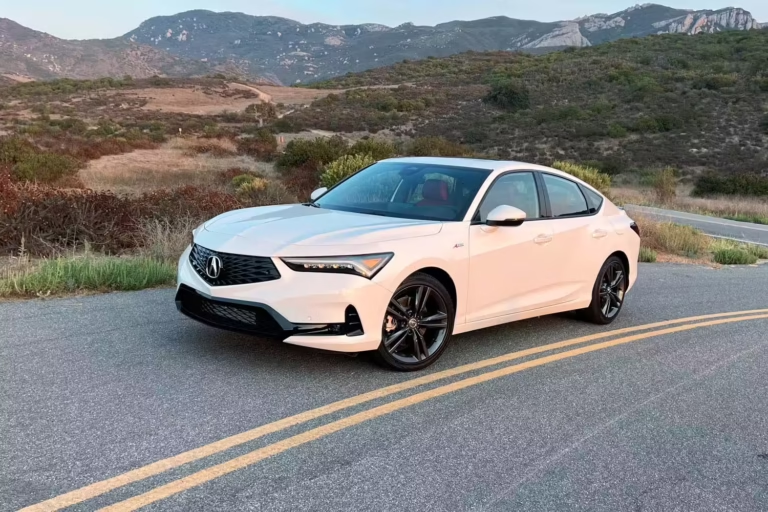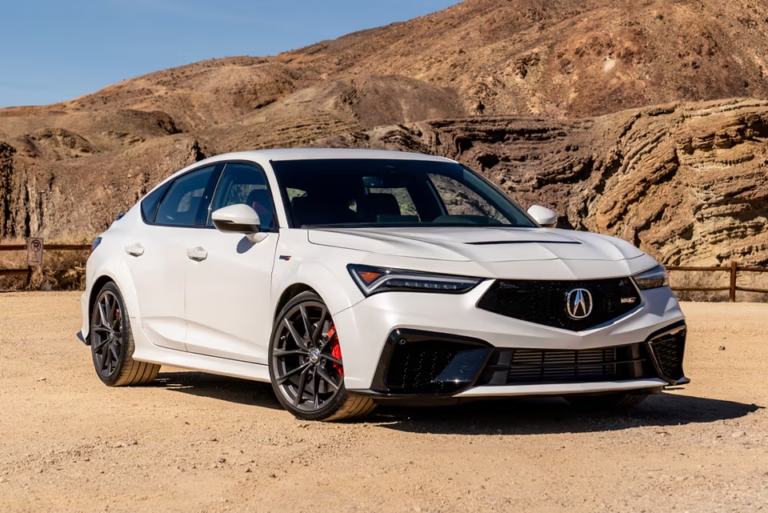Introduction
When it comes to vehicle wheels, the lug nut pattern is one of those overlooked details that can make or break your driving experience. Whether you’re upgrading to sleek new rims, replacing worn-out wheels, or exploring aftermarket options, understanding your car’s lug nut pattern is crucial. This simple yet essential measurement ensures your wheels fit perfectly, remain secure, and keep you safe on the road.
Lug nut patterns, also called bolt patterns, vary depending on the type of vehicle. Compact cars, sedans, trucks, and SUVs all have unique patterns designed to handle their specific weight, performance, and driving conditions. For example, lightweight compact cars often use a 4×100 mm pattern, while versatile sedans and sports cars rely on the popular 5×114.3 mm pattern. Heavy-duty trucks and off-road SUVs, on the other hand, need rugged patterns like 6×139.7 mm to handle the extra weight and stress.
Knowing your vehicle’s bolt pattern isn’t just for car enthusiasts; it’s essential for anyone looking to purchase new wheels or tires. A mismatched lug nut pattern can lead to poor wheel fitment, vibrations, and even dangerous situations where wheels become loose while driving. In this guide, we’ll cover the most common lug nut patterns, the vehicles that use them, and why they matter, so you can confidently choose the perfect wheels for your car.
What is a Lug Nut Pattern?
Lug nut patterns might sound like a minor detail, but they play a critical role in how your wheels attach to your car. A lug nut pattern (or bolt pattern) refers to the number of bolts on your wheel and the circle they form. It’s expressed with two numbers: the first is the number of bolts (like 4, 5, or 6), and the second is the Pitch Circle Diameter (PCD), which is the distance across the circle created by the bolts. For example, a 5×114.3 mm pattern means there are 5 bolts arranged in a circle with a 114.3 mm diameter.
Why does this matter? Well, wheels are not one-size-fits-all. Your car’s lug nut pattern determines which wheels will fit and stay secure. If you install wheels with an incompatible bolt pattern, you risk vibrations, poor handling, and even the wheels coming loose while driving. Smaller, lightweight cars use fewer bolts with smaller PCDs, while trucks and SUVs often require more bolts and larger patterns for strength. Understanding your car’s bolt pattern is key, especially if you’re upgrading wheels or replacing rims.
For example, popular patterns like 5×114.3 mm are found on cars like the Honda Accord, Toyota Camry, and Nissan Altima. Meanwhile, smaller cars like older Honda Civics or Mazda Miatas often use a 4×100 mm pattern. Trucks and SUVs typically have rugged patterns like 6×139.7 mm, used on the Toyota Tacoma and Chevrolet Silverado. Each pattern serves a purpose, designed to balance safety, strength, and vehicle performance.
The Most Common Lug Nut Patterns
5×114.3 mm (5×4.5”)
The 5×114.3 mm bolt pattern is the most common lug nut pattern across the world. With 5 bolts arranged in a 114.3 mm circle, it’s the go-to for many vehicles ranging from family sedans to sporty coupes. This pattern strikes the perfect balance between strength, versatility, and cost, which is why automakers love it. Whether you drive a commuter car or a performance vehicle, chances are you’ll come across this bolt pattern at some point.
What makes the 5×114.3 mm so versatile? It can handle a variety of driving demands, from daily commutes to high-performance handling. Vehicles like the Honda Accord, Toyota Camry, and Nissan Altima are some of the most popular sedans using this pattern. Sports cars like the Ford Mustang and Nissan 370Z also rely on it for stability and durability. On the crossover side, vehicles like the Honda CR-V and Toyota RAV4 are built with the same bolt pattern to ensure a sturdy, safe drive.
The widespread use of the 5×114.3 mm pattern also makes it easier to find aftermarket wheels. Whether you’re upgrading for performance or style, there’s a massive selection of rims available that will fit perfectly without needing adapters or custom modifications. This convenience, combined with its strength, has cemented 5×114.3 mm as one of the most popular patterns on the road today.
4×100 mm
The 4×100 mm lug nut pattern is a favorite among compact cars, especially older models and lightweight vehicles. With 4 bolts forming a 100 mm diameter circle, this pattern keeps things simple and efficient. It’s designed for smaller cars that don’t need heavy-duty wheel setups, offering just enough strength while keeping weight and costs low.
Many compact and budget-friendly cars rely on this pattern. For example, older generations of the Honda Civic, especially models produced before 2006, use the 4×100 mm bolt pattern. Other popular vehicles include the classic Mazda Miata (NA and NB models), the Volkswagen Golf (early generations), and European favorites like the BMW E30. Even modern compact cars like the Toyota Yaris and Nissan Micra still use this pattern because of its lightweight design.
For car enthusiasts, the 4×100 mm bolt pattern is a dream for wheel upgrades. Lightweight vehicles benefit greatly from custom wheels, whether for performance or aesthetics, and the 4×100 pattern allows for endless options. It’s especially popular in the tuner community, where cars like Civics and Miatas are often modified for racing or show purposes. If you own a car with this bolt pattern, you’ll find a variety of aftermarket wheels that enhance both performance and style without breaking the bank.
6×139.7 mm
When it comes to trucks, SUVs, and off-road vehicles, the 6×139.7 mm bolt pattern is king. This rugged pattern features 6 bolts arranged in a circle with a 139.7 mm diameter, providing the strength needed for heavy-duty vehicles. Trucks and SUVs face more demanding conditions—whether it’s towing, off-roading, or hauling heavy loads—so the extra bolts help evenly distribute weight and stress across the wheel.
Vehicles equipped with this bolt pattern are built to handle rough terrain and heavy work. Popular examples include the Toyota Tacoma, Chevrolet Colorado, and Nissan Frontier in the pickup truck category. On the SUV side, models like the Toyota 4Runner, Ford Bronco, and Nissan Pathfinder also use this pattern. Off-road enthusiasts are particularly fond of vehicles like the Jeep Gladiator and the legendary Toyota Land Cruiser, which rely on the 6×139.7 mm pattern for stability and durability.
If you’re someone who loves off-roading or needs a reliable vehicle for heavy-duty work, the 6×139.7 mm pattern is ideal. It ensures your wheels stay secure under extreme pressure, whether you’re climbing rocky trails or towing a trailer. Additionally, aftermarket wheels for this pattern are designed to endure harsh conditions, offering plenty of choices for truck owners who want both style and strength.
Why Do Lug Nut Patterns Vary?
Lug nut patterns vary because vehicles are built for different purposes. A lightweight compact car doesn’t require the same level of wheel strength as a heavy-duty pickup truck. The number of bolts and the size of the bolt circle directly impact the wheel’s ability to handle stress, weight, and performance demands. Smaller cars tend to use patterns like 4×100 mm, while midsize sedans favor 5×114.3 mm, and larger vehicles require 6×139.7 mm or even 8-lug patterns for added strength.
The purpose of the vehicle also determines the lug nut pattern. Performance cars, for instance, need a strong, stable bolt configuration to handle high speeds and quick maneuvers. Trucks and SUVs, on the other hand, use larger patterns with more bolts to support heavier loads and rugged driving conditions. These variations ensure safety, durability, and performance, tailored to the needs of the vehicle.
How to Measure Your Lug Nut Pattern
Measuring your lug nut pattern is easier than it sounds. Start by counting the number of lug nuts on your wheel—this gives you the first number of the bolt pattern. For the second number, measure the Pitch Circle Diameter (PCD). If your wheel has an even number of bolts (like 4 or 6), measure straight across from the center of one bolt to the center of the opposite bolt. For an odd number of bolts (like 5), measure from the center of one bolt to the outer edge of the opposite bolt.
If this sounds tricky, don’t worry—many online tools and charts can help you identify your car’s bolt pattern by make and model. You can also check your owner’s manual or the specifications printed on the back of your wheel. Accurately measuring your bolt pattern is crucial when buying replacement wheels to ensure a perfect fit.
Common Mistakes to Avoid
When dealing with lug nut patterns, there are a few common mistakes that people often make. The first and most frequent is assuming all wheels are universal. Just because two vehicles have 5 lug nuts doesn’t mean the bolt patterns are identical. For instance, a 5×100 mm pattern won’t fit a wheel designed for 5×114.3 mm, even though both have 5 bolts. Misunderstanding this can lead to purchasing wheels that don’t fit your car at all, which can be frustrating and costly.
Another mistake is misidentifying the PCD (Pitch Circle Diameter) when measuring. People often measure slightly off-center or miscalculate distances, which leads to incorrect results. Using the wrong measurement might result in buying incompatible wheels. To avoid this, always use a proper ruler, caliper, or bolt pattern gauge. For those who don’t feel confident measuring themselves, most tire or wheel shops can determine your lug nut pattern accurately.
Lastly, many people overlook wheel compatibility when upgrading. Adapters can allow wheels with different patterns to fit your car, but low-quality adapters can be unsafe. They can cause vibrations, put stress on your suspension, or, in worst cases, lead to wheels coming loose. If you do need adapters, always choose high-quality, vehicle-specific ones from trusted brands. Understanding your lug nut pattern upfront will save you time, money, and headaches when upgrading or replacing wheels.
Conclusion
Lug nut patterns might not be the most glamorous part of your car, but they’re crucial to your vehicle’s safety and performance. Whether you drive a compact car, a family sedan, or a rugged off-road truck, knowing your lug nut pattern ensures you’ll find the right wheels that fit securely. The most common patterns—like 5×114.3 mm for sedans, 4×100 mm for compact cars, and 6×139.7 mm for trucks—exist for specific reasons, balancing strength, stability, and performance.
Before purchasing new wheels, it’s essential to measure your lug nut pattern accurately or check your vehicle manual for specifications. Misunderstanding the pattern can lead to buying incompatible wheels, which is both frustrating and unsafe. With the right knowledge, you’ll have the confidence to choose wheels that look great and perform perfectly for your car. Whether you’re upgrading for style, performance, or off-road adventures, understanding lug nut patterns keeps your wheels rolling smoothly and securely.
FAQs
1. What is the easiest way to find my car’s lug nut pattern?
The easiest way is to check your vehicle’s owner’s manual or search online using your car’s make, model, and year. Alternatively, a professional tire or wheel shop can measure it for you.
2. Can I use wheel adapters to change my lug nut pattern?
Yes, wheel adapters allow you to fit wheels with a different bolt pattern onto your car. However, always use high-quality adapters from reputable brands to ensure safety and performance.
3. Are all 5-lug wheels the same?
No, not all 5-lug wheels are the same. For example, a 5×100 mm bolt pattern is different from a 5×114.3 mm pattern, even though both have 5 bolts. Always check the PCD measurement to ensure compatibility.
4. What happens if I use the wrong lug nut pattern?
Using wheels with the wrong lug nut pattern can result in poor fitment, vibrations, and even dangerous situations where the wheels become loose. Always ensure the wheels match your car’s exact bolt pattern.
5. Why do trucks and SUVs use more bolts?
Trucks and SUVs handle heavier loads and face tougher driving conditions, so they require more bolts to evenly distribute weight and stress across the wheels for added safety and durability.






